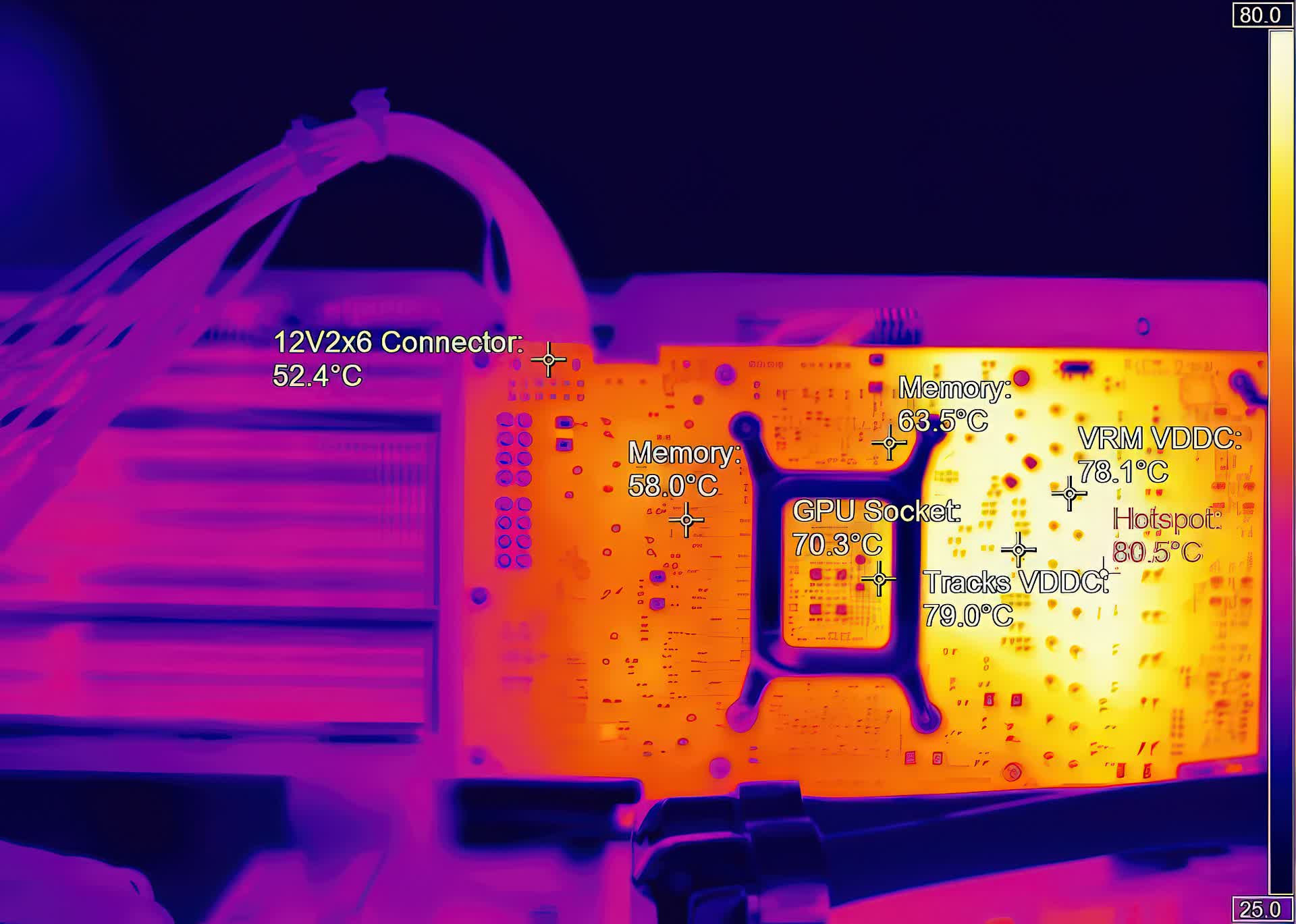A hot potato: It’s not like Nvidia’s RTX 5000 series needs any more negative press, but here we are again. Igor Wallossek of Igor’s Lab has discovered a problem that appears to be present in most Blackwell AIB partner cards: local hotspots at the rear of the PCBs. This could potentially lead to the cards being damaged over time due to heavy use.
During a sustained “torture loop” on a PNY RTX 5070 OC and Palit RTX 5080 Gaming Pro OC, Wallossek recorded temperature spikes in the power delivery areas of the cards. The RTX 5070 reached 107 °C while the GPU core sat at a much cooler 70°C, and the RTX 5080 Gaming Pro OC peaked at 80.5°C.
Wallossek writes that the problem lies with the tightly clustered arrangement of FETs, chokes, drivers and via arrays in the area that funnel hundreds of amps through a postage-stamp-sized patch of copper layers. PCB traces only 35 – 70 µm thick must share the load through stacked power planes, concentrating heat vertically and laterally.
While the power delivery components have been placed this close together to keep the card design as small as possible, the increased temperatures could have a severe impact on the cards’ long-term durability – they could last only a few years with heavy use.
Wallossek also points to shortcomings in Nvidia’s Thermal Design Guide, made available to all manufacturers of AIB cards and components. Key parameters in the guide are validated under ideal lab conditions rather than worst-case, high-humidity, poorly ventilated chassis scenarios that real gamers endure.
Igor’s quick-and-dirty fix – adding a strip of thermal putty and a thicker pad to bridge the hotspot to the backplate – led to significant temperature reductions. The RTX 5080’s hotspot dropped from 80.5°C to 70.3°C, while the RTX 5070 dropped from 107.3°C to “well below 95°C,” which is still quite hot.
Igor’s measurements show VRM zones flirting with electromigration onset of around 80°C or even exceeding the glass-transition temperature of standard PCB resin of around 105 °C during heavy gaming loads.
Nvidia has not yet responded to the reports. Several engineers posting in Igor’s Lab’s comment thread suggest the company relies heavily on partner self-certification, with GPU and memory sensors the only metrics checked in its Green Light program – an internal compliance-and-certification system that every AIB partner must pass before it can ship a GeForce graphics card.
Source link
